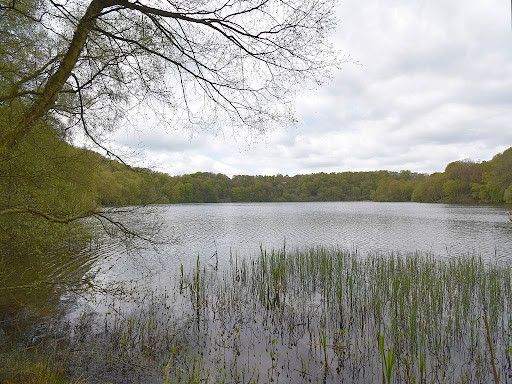
|
| Gormire lake |
A previous post looked into some of the folklore and beliefs connected with Gormire Lake located four miles to the east of Thirsk.
One legend has it that a small town once stood where the lake is now, but on one fateful night an earthquake struck the town, and it sank into the earth. A great flood of water then covered the town and created Gormire lake. The folklore also says that under certain conditions, roof tops and chimneys can be seen below the surface of the lake, along with the glint of silver plates from the houses. Else where in the country these kind of stories have been shown to contain a grain of truth, with the discovery of submerged remains of Iron Age 'Crannog' type houses that were built out over the water. The reference to glinting metal work is also interesting in connection with votive deposits that were thrown into lakes during the Iron Age, and the proximity of the massive Iron Age hill fort on the hill top above the lake.



